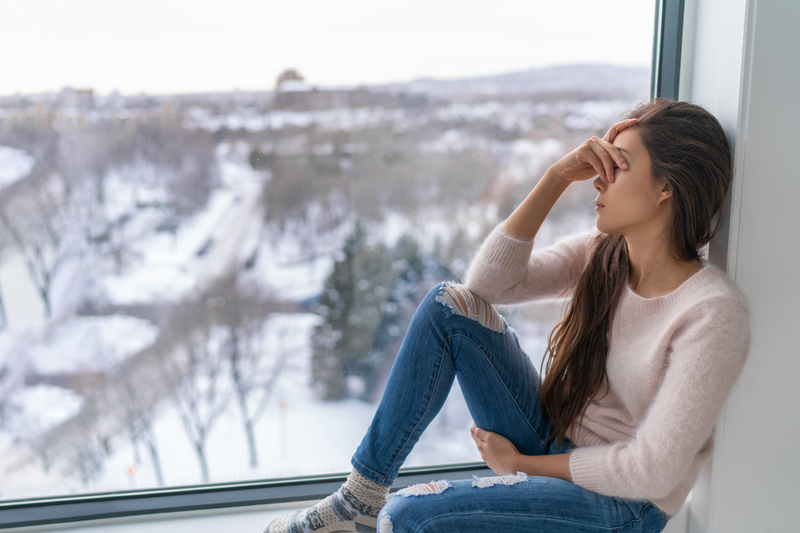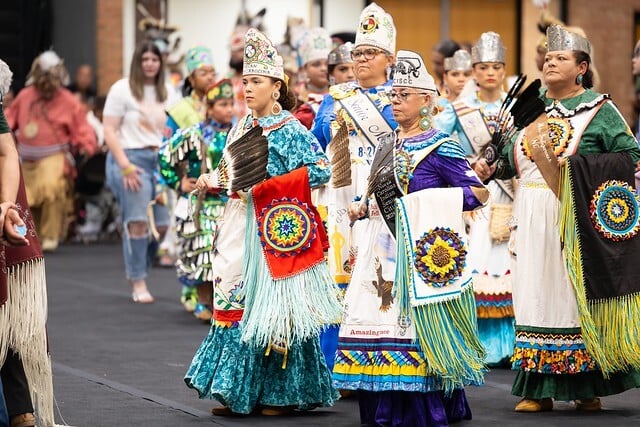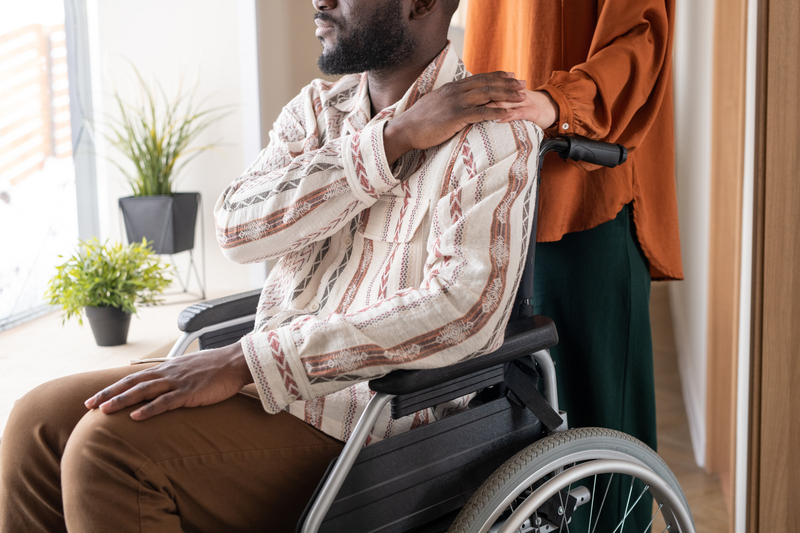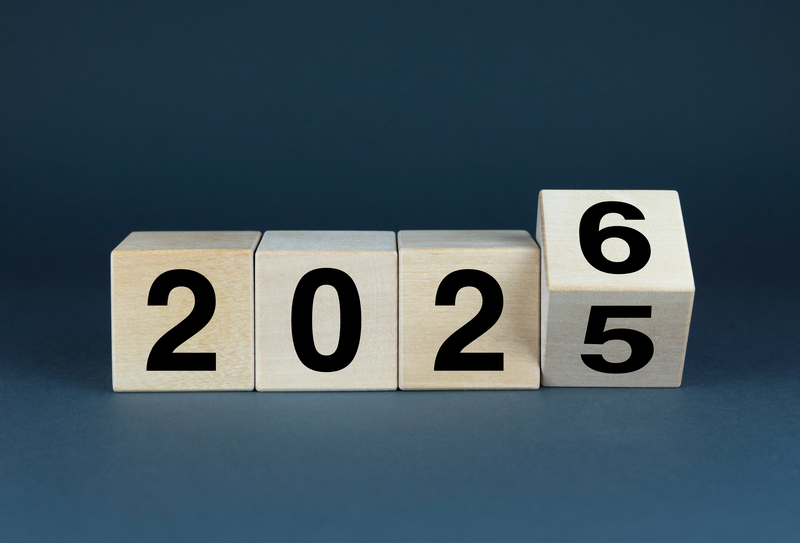- By Adjoa Kyerematen
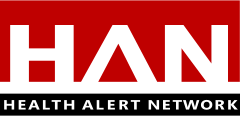
Distributed via the CDC Health Alert Network
December 14, 2023, 12:15 PM ET
CDCHAN-00503
Summary
The Centers for Disease Control and Prevention (CDC) is issuing this Health Alert Network (HAN) Health Advisory to alert healthcare providers to low vaccination rates against influenza, COVID-19, and RSV (respiratory syncytial virus). Low vaccination rates, coupled with ongoing increases in national and international respiratory disease activity caused by multiple pathogens, including influenza viruses, SARS-CoV-2 (the virus that causes COVID-19), and RSV, could lead to more severe disease and increased healthcare capacity strain in the coming weeks. In addition, a recent increase in cases of multisystem inflammatory syndrome in children (MIS-C) following SARS-CoV-2 infection in the United States has been reported Healthcare providers should administer influenza, COVID-19, and RSV immunizations now to patients, if recommended. Healthcare providers should recommend antiviral medications for influenza and COVID-19 for all eligible patients, especially patients at high-risk of progression to severe disease such as older adults and people with certain underlying medical conditions. Healthcare providers should also counsel patients about testing and other preventive measures, including covering coughs/sneezes, staying at home when sick, improving ventilation at home or work, and washing hands to protect themselves and others against respiratory diseases.
Background
Reports of increased respiratory disease have been described in multiple countries recently. CDC is tracking increased respiratory disease activity in the United States for several respiratory pathogens, including influenza viruses, SARS-CoV-2, and RSV,across multiple indicators such as laboratory test positivity, emergency department visits, wastewater, and hospitalizations. Currently, the highest respiratory disease activity in the United States is occurring across the southern half of the country, with increasing activity in northern states.
In the past 4 weeks, hospitalizations among all age groups increased by 200% for influenza, 51% for COVID-19, and 60% for RSV. As of December 1, 2023, the weekly percentages of pediatric emergency department visits for pneumonia due to multiple etiologies were increasing since September in children, but remains consistent with prior fall and winter respiratory activity. To date, 12 pediatric influenza deaths have been reported during the 2023–2024 season. From September 1 through December 10, 2023, CDC received 30 reports of MIS-C, a rare complication that typically occurs 1 month after SARS-CoV-2 infection, with illness onset among cases occurring from August 6 to November 9, 2023, a relative increase compared with previous months. High RSV activity is also occurring across much of the United States.
Influenza, COVID-19, and RSV can result in severe disease, especially among unvaccinated persons. Infants, older adults, pregnant people, and people with certain underlying medical conditions remain at increased risk of severe COVID-19 and influenza disease. Infants and older adults remain at highest risk of severe RSV disease; it is the leading cause of infant hospitalization in the United States.
Vaccination for influenza, COVID-19, and RSV reduces the risk of severe disease, including pneumonia, hospitalization, and death. Vaccination for COVID-19 can also reduce the risk of MIS-C and post-COVID conditions.
- Influenza vaccination: Vaccination coverage for the seasonal 2023-2024 influenza vaccine is low in all age groups compared with the same period of the 2022–2023 season (Table 1). As of November 18, 2023, there were 7.4 million fewer influenza vaccine doses administered to adults in pharmacies and physician offices compared with the 2022–2023 influenza season.
Table 1. Influenza Vaccination Coverage Estimates, United States
| Population |
2022–2023 |
2023–2024 |
| Age 6 months–17 years (as of November 11) |
39.1% |
35.9% |
| Age ≥18 years (as of November 11) |
38.4% |
36.1% |
| Age ≥65 years (as of November 11) |
61.3% |
58.6% |
| Pregnant people (as of December 2) |
36.0% |
33.6% |
- COVID-19 vaccination: Vaccination coverage for the updated 2023-2024 COVID-19 vaccine remains low. As of December 2, 2023, the percent of the population reporting receipt of this vaccine was 7.7% in children 6 months–17 years (including 2.8% in children 6 months–4 years), 17.2% in adults ≥18 years (including 36% in adults ≥65 years), and 9.6% in pregnant persons.
- RSV vaccination: As of December 2, 2023, 15.9% of U.S. adults aged ≥60 years reported receiving an RSV vaccine.
Key reasons for low vaccination uptake of influenza, COVID-19, and RSV vaccines based on survey results from a nationally representative sample of U.S. adults (Ipsos KnowledgePanel and NORC AmeriSpeak Omnibus Surveys), include:
- lack of provider recommendation,
- concerns or issues about unknown or serious side effects,
- occurrence of mild side effects, and
- lack of time or forgetting to get vaccinated.
Recommendations for Healthcare Providers
Healthcare providers should administer influenza, COVID-19, and RSV immunizations now to patients, if recommended. Immunizations can prevent hospitalization and death associated with these respiratory diseases. Immunizations are especially important for people at increased risk for severe disease, including infants, older adults, pregnant people, and people with certain underlying medical conditions. COVID-19 vaccination can also reduce the chance of MIS-C and post-COVID conditions. Vaccination of pregnant people against influenza and COVID-19 protects both the patient and their infants who are too young to be vaccinated. Vaccination of pregnant people against RSV protects the infant against RSV after birth and is especially important given supply issues with nirsevimab this season. Antiviral medications for influenza and COVID-19 should be recommended for all eligible patients, especially patients at high-risk of progression to severe disease such as older adults and people with certain underlying medical conditions.
- Providers should leverage all available tools to increase immunizations against influenza, COVID-19, and RSV. CDC has developed communication tools including a conversation guide and immunization call-back message template to aid provider efforts in increasing immunizations in their patient populations. Additional tools can be found at CDC’s Healthcare Provider Toolkit: Preparing Your Patients for the Fall and Winter Virus Season.
Table 2. At-A-Glance: Vaccination Conversation Guide for Healthcare Providers
|
What patients may say |
What providers can do |
Tools for providers |
| “I didn’t know vaccination was recommended for me.” | Make a strong recommendation, like “You are due for your flu and COVID-19 vaccines today. I’ve gotten these vaccines myself and recommend them for you, too.” | Conversation Guide for Healthcare Providers |
| “It’s not top of mind/I keep forgetting.” | Send a reminder message to your patients now via your patient portal or text message to remind them about the importance of getting vaccinated now. | Script for patient portal reminder message in English and Spanish (download) |
| “I’m worried about vaccine safety.” | Give your patients accurate and up-to-date information about vaccine benefits and safety. | Conversation Guide for Healthcare Providers |
| “I’m not sure about getting vaccinated.” | Use motivational interviewing. Start with questions like “I hear you. If it’s okay with you, I would like to spend a few minutes talking more about fall and winter respiratory vaccines.” | Conversation Guide for Healthcare Providers |
| “I’m worried about getting three vaccines at once.” | Discuss the facts on coadministration and the most important thing—getting all recommended vaccines. | What to Know About Getting Flu, COVID-19, and RSV Vaccines at the Same Time |
| “My child is healthy, so they don’t need vaccines.” | Let families know that while children with some health conditions are at higher risk of getting very sick, over half of the children under age 2 years hospitalized for COVID-19 and then admitted to the intensive care unit were otherwise healthy. | Conversation Guide for Healthcare Providers |
- Healthcare providers should administer influenza, COVID-19, and RSV immunizations now to all patients, if recommended.
- Everyone 6 months and older should receive a 2023–2024 seasonal influenza vaccine. Most people need only one dose for the season. Some children ages 6 months–8 years need two doses spaced 4 weeks apart. Adults ages 65 years and older should receive high-dose, adjuvanted, or recombinant influenza vaccine, if available.
- Everyone 6 months and older should receive at least one dose of an updated 2023-2024 COVID-19 vaccine. More than one dose may be needed for children 6 months through 4 years, immunocompromised patients, and unvaccinated persons 12 years and older who choose to receive the Novavax vaccine.
- Adults 60 years and older may receive one dose of RSV vaccine using shared clinical decision-making. Both Pfizer Abrsyvo and GSK Arexvy are approved for use in adults 60 and older. Individuals and their providers should consider the patient’s risk for severe RSV disease. Older adults at highest risk of severe disease due to RSV include those with cardiopulmonary disease and those living in long-term care facilities.
- There are two options to protect infants against RSV-associated lower respiratory tract disease: RSV vaccine for pregnant people and nirsevimab for infants.
- Pregnant people 32 through 36 weeks gestation should receive RSV vaccination. Only the Pfizer RSV vaccine (Abrysvo) is recommended pregnant people . GSK Arexvy is not recommended for use in pregnant people.
- Nirsevimab is recommended for infants <8 months, as well as some infants aged 8 through 19 months at increased risk. Because RSV activity is surging across all continental U.S. regions, providers should use available nirsevimab doses expeditiously rather than reserving nirsevimab doses for infants born later in the season. In settings with limited nirsevimab availability during 2023–2024, please see the recent CDC HAN Health Advisory about limited availability of nirsevimab in the United States for further guidance. Neither Pfizer Abrysvo nor GSK Arexvy is approved for infants or children.
- Either RSV vaccination of pregnant people (Pfizer Abrysvo) or nirsevimab immunization for infants is recommended to prevent RSV-associated lower respiratory tract disease in infants; administration of both products is not needed for most infants.
- For MIS-C, a new CSTE/CDC MIS-C case definition went into effect in January 2023 and updated MIS-C treatment guidelines were released in July 2023. Providers are encouraged to report cases of MIS-C to their jurisdictional health department. Providers can consult with state and local health departments about suspect cases.
- Antiviral medications are currently underutilized but are important to treat patients, especially persons at high-risk of progression to severe disease with influenza or COVID-19, including older adults and people with certain underlying medical conditions.
- Both influenza antiviral medications and COVID-19 antiviral medications are most effective in reducing the risk of complications when treatment is started as early as possible after symptom onset.
- Testing for SARS-CoV-2 and influenza A and B viruses can distinguish among these and other co-circulating respiratory viruses to inform antiviral treatment decisions. When influenza activity is high in the community, empiric antiviral treatment can be prescribed accordingly based upon a clinical diagnosis of influenza.
- Antiviral treatment of influenza is recommended as soon as possible for persons who are at higher risk for influenza complications. Persons with influenza who are not at higher risk and within 2 days of symptom onset can be prescribed antiviral treatment based upon clinical judgement to shorten their illness duration.
- COVID-19 antivirals are recommended for treatment of mild to moderate COVID-19 in individuals at increased risk of severe illness and can reduce the risk of hospitalization for a wide range of patients, including those who are 50 years and older and people with various medical conditions.
- COVID-19 antivirals can be taken safely even with many other medications. Clinicians should evaluate drug-drug interactions as some medications may need to be stopped or changed.
- COVID-19 antivirals can be accessed from providers, telehealth such as the free Home Test to Treat program (COVID-19 and influenza testing and antivirals available), test-to-treat sites, pharmacies with clinics, and U.S. Government Patient Assistance Program and manufacturer access programs.
- Healthcare providers should counsel patients about other everyday preventive actions they can do to protect themselves against respiratory diseases including testing, covering coughs and sneezes, washing hands wearing a well-fitting mask if a patient chooses to wear a mask, and improving ventilation in home and work environments.
Recommendations for Health Departments
- Work with providers to increase vaccination rates against influenza, COVID-19, and RSV, including sharing CDC’s Conversation Guide for Healthcare Providers and healthcare provider toolkit.
- Other activities health departments can engage with providers to increase vaccination coverage include:
- Support centralized Immunization Information Systems (IIS) reminder/recall
- Provide outreach to provider specialty groups (e.g., state chapters for the American Academy of Pediatrics and American College of Obstetricians and Gynecologists) and other local provider education opportunities
- Publicly share local vaccination coverage data
- Disseminate press releases highlighting low vaccination coverage and urging protection in advance of the holidays
- Although MIS-C is not a nationally notifiable condition, health departments are encouraged to report all cases meeting confirmed, probable, or suspect criteria to CDC.
Recommendations for the Public
- Talk to your healthcare provider about immunizations recommended for you and your household or family members, including children.
- If you develop symptoms of a respiratory illness, talk to your healthcare provider about testing and treatment options.
- Be aware of everyday prevention measures including covering coughs and sneezes, washing hands, staying home when sick, wearing a well-fitting mask if you choose to wear a mask, and improving airflow at home or at work.
- Use the Vaccines.gov website to find a location to receive COVID-19 and flu vaccines. Uninsured and underinsured adults can receive COVID-19 vaccines at no cost to them through CDC’s Bridge Access Program.
- Pregnant people and older adults can use the manufacturer’s website (Pfizervax.com) to find a location offering Pfizer Abrysvo RSV vaccine.
For More Information
Respiratory Diseases
- Respiratory Disease Activity | CDC
- Protect Yourself and Others from COVID-19, Flu, and RSV | CDC
- Healthcare Provider Toolkit: Preparing Your Patients for the Fall and Winter Virus Season| CDC
Influenza
- FluVaxView: Weekly Flu Vaccination Dashboard | CDC
- How to Prevent Flu | CDC
- Who Needs a Flu Vaccine | CDC
- Flu Vaccines Work | CDC
- Getting a Flu Vaccine and Other Recommended Vaccines at the Same Time | CDC
- Flu Activity and Surveillance| CDC
- Information for Health Professionals | CDC
- Information for Clinicians on Influenza Virus Testing | CDC
- Flu Treatment | CDC
- Summary of Influenza Antiviral Treatment Recommendations for Clinicians | CDC
COVID-19
- CDC COVID-19 Data Tracker | CDC
- COVIDVaxView Weekly COVID-19 Vaccination Dashboard | CDC
- Use of COVID-19 Vaccines in the United States | CDC
- NIH COVID-19 Treatment Guidelines for Adults | NIH
- Interim Clinical Considerations for COVID-19 Treatment in Outpatients
- COVID-19: People with Certain Medical Conditions | CDC
- COVID-19: Test to Treat Locator | ASPR
- Indicators for Monitoring COVID-19 Community Levels and Making Public Health Recommendations | CDC
RSV
The Centers for Disease Control and Prevention (CDC) protects people’s health and safety by preventing and controlling diseases and injuries; enhances health decisions by providing credible information on critical health issues; and promotes healthy living through strong partnerships with local, national and international organizations.
DEPARTMENT OF HEALTH AND HUMAN SERVICES
HAN Message Types
- Health Alert: Conveys the highest level of importance about a public health incident.
- Health Advisory: Provides important information about a public health incident.
- Health Update: Provides updated information about a public health incident.
###
This message was distributed to state and local health officers, state and local epidemiologists, state and local laboratory directors, public information officers, HAN coordinators, and clinician organizations.
###
Trending Topics
Features
- Drive Toolkit
Download and distribute powerful vaccination QI resources for your community.
- Health Champions
Sign up now to support health equity and sustainable health outcomes in your community.
- Cancer Early Detection
MCED tests use a simple blood draw to screen for many kinds of cancer at once.
- PR
FYHN is a bridge connecting health information providers to BIPOC communities in a trusted environment.
- Medicare
Discover an honest look at our Medicare system.
- Alliance for Representative Clinical Trials
ARC was launched to create a network of community clinicians to diversify and bring clinical trials to communities of color and other communities that have been underrepresented.
- Reducing Patient Risk
The single most important purpose of our healthcare system is to reduce patient risk for an acute event.
- Jessica Wilson
- Jessica Wilson
- Victor Mejia

